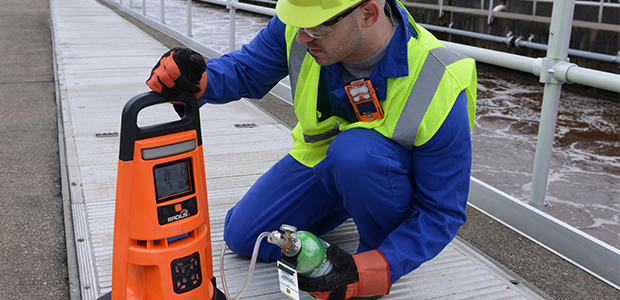
Redefining Compliance for the Gas Detection Buyer
When it comes to gas detection, compliance with OSHA standards is a gray area.
- By Kyle Krueger
- Nov 19, 2019
Compliance is a term you probably hear more often than you would like when you’re on the job. But what is compliance? Compliance can mean adhering to any number of different rules—internal compliance with company policies, compliance with site rules, compliance with the person who says “use this equipment,” and of course, compliance with OSHA standards.
However, when it comes to gas detection, compliance with OSHA standards is a gray area. Aside from confined spaces, which are covered under 29 CFR 1910.146, you are left with OSHA’s General Duty Clause, which states, “Employers must provide their employees with a workplace free from recognized hazards likely to cause death or serious physical harm.”
If that sounds like it leaves a lot of room for interpretation, you’re right. It means that companies are responsible for determining what will keep their workers safe. That’s a tremendous responsibility and one that you must take seriously.
If you have ever found yourself in this situation and need to determine if your gas detection program is “compliant” and will protect workers from death or physical harm, consider these points:
Ownership is not the same as compliance. Here’s a common scenario: your company hasn’t had a gas-related accident in years. However, now you are being told that you must buy new gas monitors. You weren’t planning on this purchase, and you haven’t had any issues, so you buy them strictly to maintain compliance.
When the perceived risk of a gas-related incident is low, it’s possible (and likely) that you won’t review the manuals or properly train employees. Don’t fall into the trap of thinking that owning gas monitors is the same as using them properly.
Compliance requires bump testing. Turn to page one or two of your gas detection manual. Seriously, go grab it. Somewhere on that page, you will see something like “bump test before each day’s use.” These words (or something similar) are in every manual. Why? Because a gas detector can appear operational, but fail to respond to a critical gas hazard. Just like a car’s manual reminds you to buckle your seatbelt, a gas detection manual asks for a bump test. Without a bump test, you have no way of knowing that your gas monitor will alert you to hazards.
Calibration maintains accuracy. Electrochemical sensors drift and become less accurate over time. This gradual loss of sensitivity is inherent, but can accelerate in dirty environments, around high concentrations of gas, after rough handling (drops, falls, etc.), and in extreme temperatures. These are also common characteristics of industrial job sites. Therefore, all gas detection manuals reference calibration. Sadly, if you don’t calibrate your gas monitors frequently, then you won’t detect sensor failures until it’s too late.
People ignore alarms. Nobody wants to acknowledge it, but we must: people ignore alarms. This can happen for many different reasons. Some people think they are invincible. Others don’t understand what the alarm is telling them. And sometimes, alarms uncover issues that nobody wants to deal with. Every gas detector contains a data log that can clearly illustrate these issues. However, many companies don’t use the software that can illuminate them. Compliance isn’t just about having gas detectors that can alert workers to gas hazards—it’s about heeding the alarms and taking appropriate protective action.
If you still aren’t sure if you’re doing the right thing, ask yourself a few simple questions. Why are workers required to wear gas monitors in the first place? If someone gets hurt and the accident was due to the monitor not doing its job, how compliant was that? If it didn’t respond to gas, were you compliant? If a worker ignored an alarm, were you compliant?
Once you recognize the impact a workplace injury or death can have on families, you can understand why simply buying gas detectors isn’t enough. If you maintain your gas detectors and review them regularly, then you will meet the true goal of compliance: sending your workers home safely every day.
This article originally appeared in the November/December 2019 issue of Occupational Health & Safety.